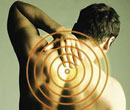Radiofrequency Rhizotomy, or Neurotomy, is a unique and technologically advanced medical procedure designed to disrupt nerve endings in the facet joints of the neck or lower back. These small joints are responsible for supporting weight and controlling movement between individual vertebrae of the spine, which can suddenly or progressively become damaged, inflamed, or impinged. Initially, practitioners will choose more traditional therapeutic interventions, such as facet joint injections, oral medications, and physical therapy. However, when these interventions are ineffective in treating an individual’s discomfort, a pain management specialist may perform a radiofrequency rhizotomy as an alternative therapeutic approach.
Initially, patients will be given a local anesthetic to decrease the discomfort associated with the primary needle insertion. Valium is also provided for sedation and relaxation. When the patient is comfortable, a thin insulated needle is inserted between the lumbar facet joints directly into the effected areas. The needle has a radio frequency device at its tip, which utilizes the same technology a kitchen microwave uses to quickly heat foods and materials. To ensure accurate needle placement, the physician will utilize a live X-ray device, shock the effected areas with low volts of electricity, and seek feedback from the patient. When the physician is comfortable with the needle’s position, he will activate the radio frequency machine attached to the inserted needle. The needle’s tip will then quickly heat up, and specific nerves are intentionally burned. This method of “burning” is designed to disrupt nerve endings near the spine that are responsible for transmission of pain signals to areas of the back and neck.
If Valium is taken prior to a treatment session, patients should refrain from eating heavily and have a friend or family member provide transportation. Expect the procedure to take between 45 and 90 minutes, including time afterwards for rest and observation. Similar to other pain management procedures, one individual might experience immediate pain relief, while another person might require additional treatments. Even after a successful treatment, certain people may require another round of treatment years later, due to the possibility of nerve regeneration.






